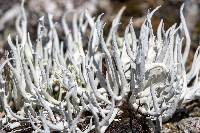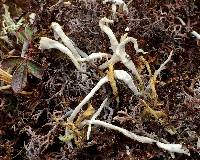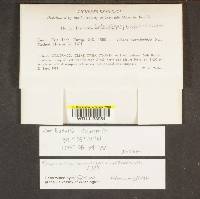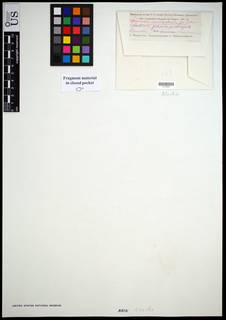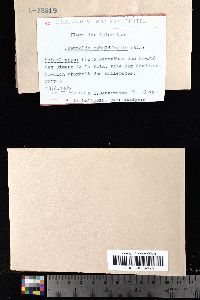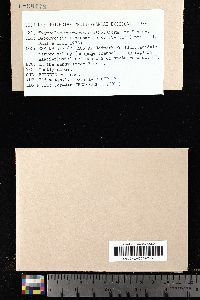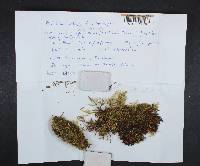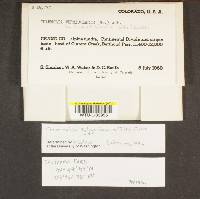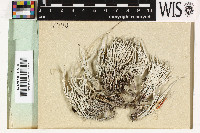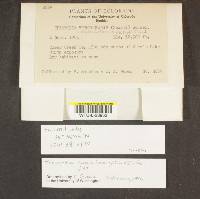
- Home
- Search
- Images
- Species Checklists
- US States: O-Z >
- US National Parks
- Central America
- South America
- US National Parks
- Southern Subpolar Region
|
|
|
|
Family: Icmadophilaceae
[Cladonia subuliformis (Ehrh.) Hoffm., moreCladonia vermicularis var. subuliformis (Ehrh.) Schaer., Lichen subuliformis Ehrh., Thamnolia vermicularis f. subuliformis (Ehrh.) Harm., Thamnolia vermicularis subsp. subuliformis (Ehrh.) Schaer., Thamnolia vermicularis var. subuliformis (Ehrh.) Schaer.] |
Thompson, J., 1984. American Arctic Lichens: The Macrolichens. Thallus as in the following species, of erect, simple to sparingly branched, pointed, cylindrical podetia which are white but do not change color or stain herbarium paper on long standing. Reactions: UV+ yellow, K— or pale yellow, P+ yellow. Contents: squamatic and baeomycesic acids. This species, like the following, grows on many types of tundras but is more common than it in the more sheltered localities. It is used by the golden plover in decorating its nest sites (Sauer 1962). It is both more abundant and more wide ranging than T. vermicularis in the northern hemisphere where it is circumpolar. In the southern hemisphere it is rare. Global occurrence: Oceania – Australasia | Eurasia – Europe | Americas – North America (incl Mexico) | Americas – South and Central America | Arctic. Substrate: soil, clay, humus, turf, detritus, dead leaves. Life habit: lichenized (mutualistic with algal photobionts). Thallus: fruticose (fruticous), shrub-like, beard-like; [th] upper surface: white(ish) | grey(ish) white; [th upper surface]: epruinose; [th marginal and upper surface] specific structures: absent; [th] morphol substructures (eg areoles, lobes, branches) width [mm]: (low) 1.0 (high) 2.0 (max) 8.0; [th] morphol substructures (eg areoles, squamules): distantly discontiguous; [th] morphol substructures (eg lobes, branches): irregular. Ascomata: absent. Secondary metabolites: present, baeomycesic acid | squamatic acid. Primary photobiont: present, chlorophytaceous – trebouxiaceous, chlorococcoid. Secondary photobionts (eg in cephalodia): absent. |



